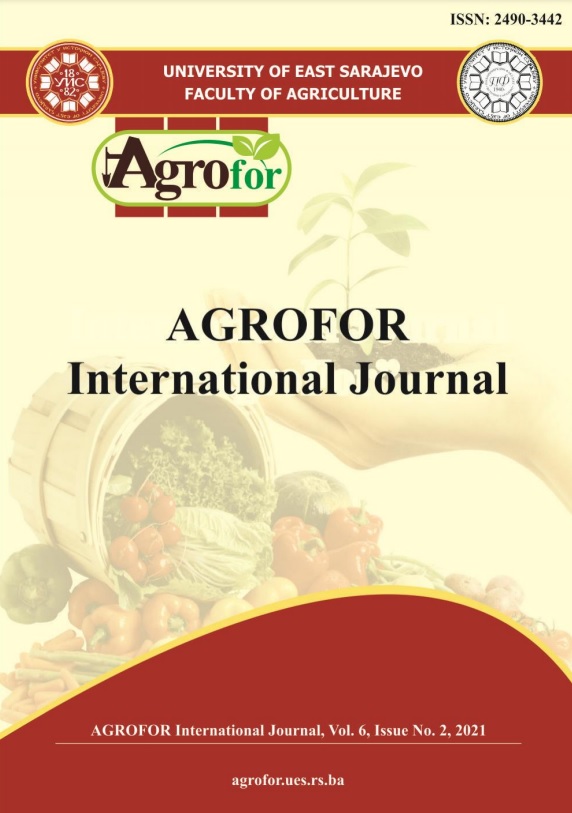FERMENTATION AND MICROBIAL DYNAMICS OF PERENNIAL GRASSES SILAGE PREPARED WITH BIOLOGICAL INOCULANT
DOI:
https://doi.org/10.7251/AGRENG2102106DAbstract
Ensilage provides an effective means of conserving green forage to supply as feed to ruminants. The fermentation process presented in the ensilage process depend on lactic acid bacteria (LAB). Silage quality is variable and the only way to effectively
control the fermentation process, to improve the ensiling process and the quality of the resulting silage is to use an additive, mostly biological inoculants with LAB. The aim of this study was to evaluate the fermentation and microbial dynamics of
perennial grasses silage with biological inoculant. Alfalfa and Poaceae mixed grasses were ensiled. Into grass silage was added biological additive, consisted of mixture of homofermentative and heterofermentative LAB and enzymes. Inoculant included strains Lactobacillus plantarum, Pediococcus acidilactici, Pediococcus pentosaceus, Propionibacterium acidipropionici, α-amylase, β-glucanase, cellulase and hemicellulase. The fermentative quality, chemical composition parameters and microbiological counts of silages at 7, 14, 21 and 60 days after ensilage were evaluated. Fermentation dynamics were examined using chemical analysis. The study showed higher values of dry matter, crude fat and NDF after supplementation of biological additive in all analyzed samples. Conversely, there was a reduction of the pH and water soluble carbohydrates concentration. Ensiling caused an increase of acetic acid concentrations as well (p<0.001). There were found significant differences (p<0.05) in contents of NEL between 21 and 60 days of ensiling after treatment and between the control group of fresh grass and 7 and 21 days after treatment as well. At the 7 day of fermentation process there was a significant increase in Lactobacillus spp. abundance (p<0.001) and on 60 day there was a decrease in Clostridium spp. abundance (p<0.001).
Key words: Silage, Inoculant, Lactic acid bacteria, Enzyme, Fermentation.

